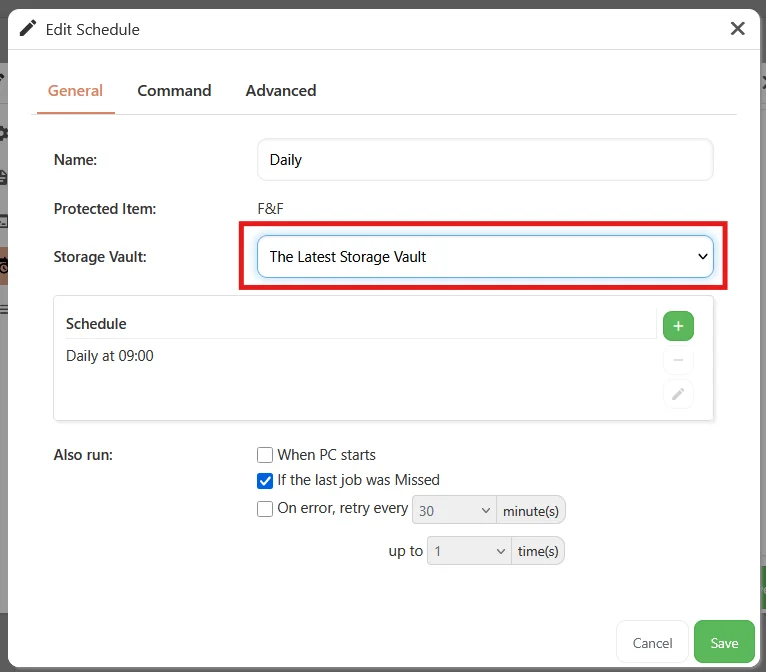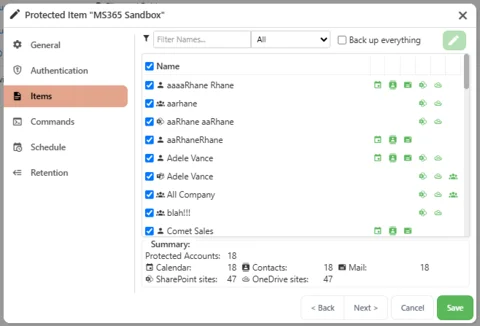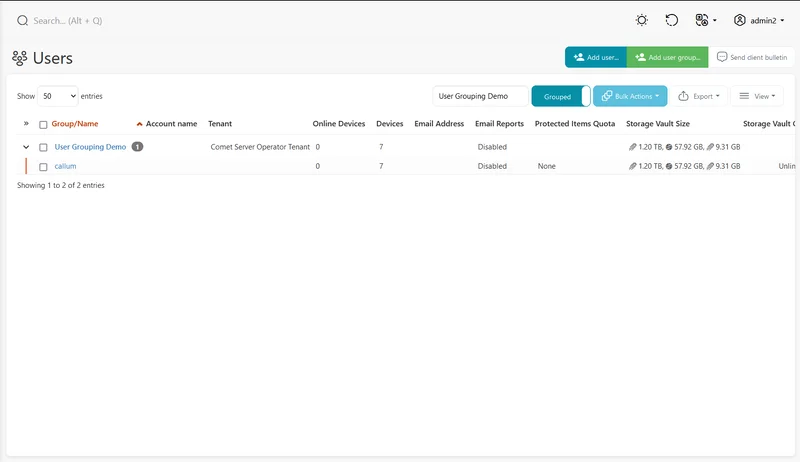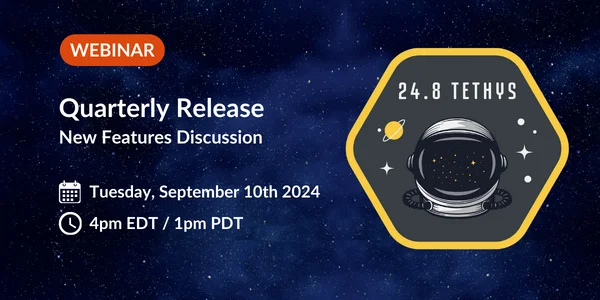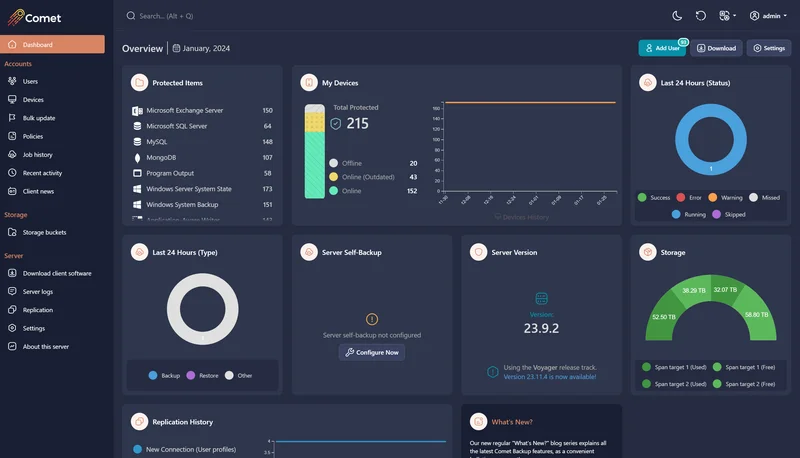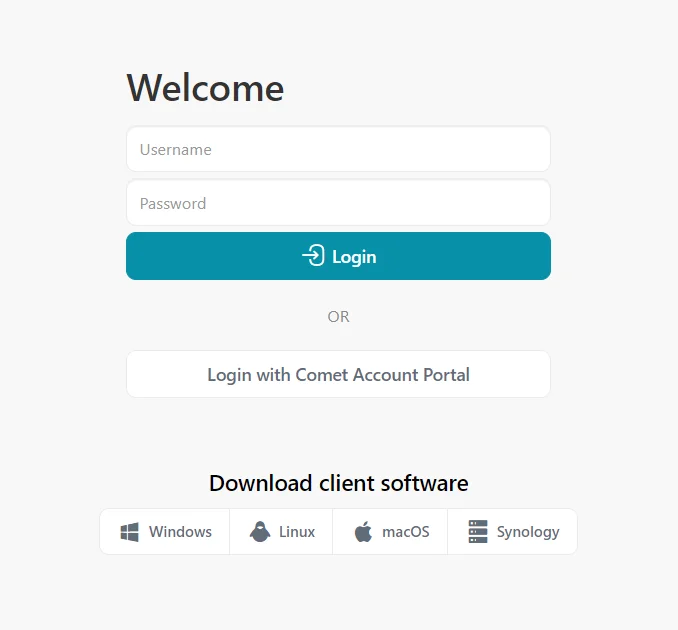Written by Callum Sinclair - Product Engingeering Manager
Comet 25.8.0 Titan
Comet 25.8.0 Titan, our latest Quarterly release, brings 4 new features and 7 enhancements, including a General Access Beta for Proxmox VE Protected Item backup, an MSI Installer for Comet Backup desktop app on Windows, an RPM Installer for Comet Backup desktop app on Linux, and much more.
The full set of changes can be found in the release notes.
Why Titan?
This Quarterly release is named after Saturn's moon Titan. Fun fact: Titan, Saturn's largest moon, is the only moon with a substantial atmosphere and the only place besides Earth known to have liquids on its surface, including clouds, rain, rivers, lakes and seas of liquid hydrocarbons like methane and ethane.
Webinar announcement

Join us for our Quarterly webinar on Tuesday, September 23rd (4pm ET / 1pm PT). Comet's CTO, Mason, will cover all the latest product updates, with a live question-and-answer session at the end.
New Feature: Proxmox Virtual Environment Protected Item General Access Beta
With Comet 25.8.0 Titan, our new Proxmox VE Protected Item is now available as a General Access Beta feature.
Proxmox Virtual Environment is a complete, open-source server management platform for virtualization.It tightly integrates the KVM hypervisor, Linux Containers (LXC), software-defined storage, and networking functionality on a single platform. With the integrated web-based user interface you can manage VMs, containers, high availability for clusters, and the integrated disaster recovery tools with ease.
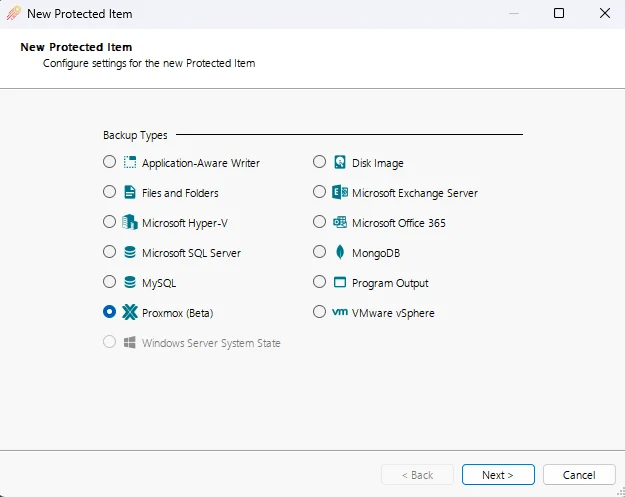
Features of Comet's Proxmox VE Backup
Note: Features listed here are work in progress and may not be available during the beta
- Virtual Machine and Container Backup & Restore
- Restore Virtual Machines to Hyper-V, Proxmox and VMware
- Restore Physical Machines from Disk Image Protected Items
- Migration Tool from Hyper-V and VMware
Migrate virtual environments from VMware to Proxmox
Our new Proxmox VE Protected Item can be used to migrate VMs away from VMware onto a Proxmox Cluster.
If you have an existing VMware Protected Item with Comet, you can migrate to Proxmox quickly without losing your backup history. This allows you to restore an older VM backup if required without needing to use any other systems or manage multiple backup jobs per VM.
Once Comet has performed a VMware VM backup, if you set the Proxmox Protected Item to back up the same VM to the same Storage Vault as the VMware Protected Item, Comet's chunking algorithm will be able to deduplicate the backups together. This has a large number of benefits such as reducing total Storage required to maintain VM backups from multiple hypervisors and significantly faster backups as the first Proxmox VM backup does not need to reupload a lot of data.
Please note:
- As these features are in beta, they come with a risk of bugs or unintended behavior
- Check this link for known beta limitations
New Feature: RPM installer for Comet Backup desktop app
We're proud to announce that a native RPM installer is now available for the Comet Backup desktop app. This is especially useful for MSPs supporting Red Hat, CentOS, AlmaLinux, Rocky Linux, and other RPM-based distributions.

Comet Backup's RPM installer is ideal for Linux users who want better manageability, consistency, and compliance in their backup deployments.
New Feature: MSI Installer
To provide more flexibility for installing the Comet Backup desktop application on Windows, Comet now offers a new MSI installer option.
Using an MSI installer is great option for mass deployments and supports all the install features and flags that Comet's .exe installer offers.

MSPs looking to automate their large scale Comet deployments using products such as Intune can now do this easier than ever before.
New Feature: Automatically Create New Storage Vaults via Policies
You can now automatically create new Storage Vaults when new devices register, based on predefined rules in your device policy.
Since Comet 24.12.0, a new user setting has been available to choose if devices that share the same user account should back up Protected Items to a shared Storage Vault or isolated Storage Vaults.
This has been extended to interact with Comet's Policy system to set Default Protected Items. A Default Protected Item is a great way to ensure Protected Items are automatically created when a new device is registered to a user.
Now, when the Policy setting under the Storage Vaults tab Automatically create Storage Vault for new devices is configured, new devices registered to a user will have a Default Protected Item created and will have a Storage Vault automatically provisioned and ready to back up.

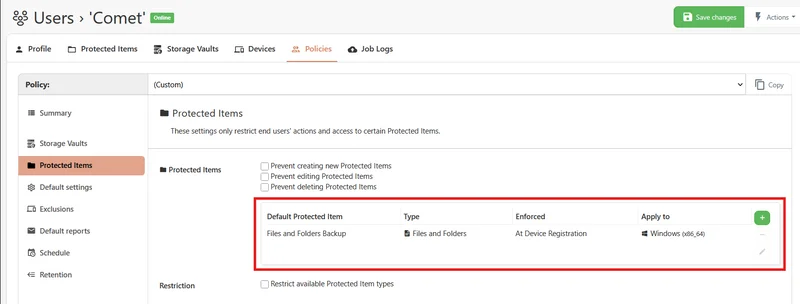
To make the most out of the Default Protected Item feature, you will need to set a Schedule when configuring the Default Protected Item.
When the Storage Vault for the Schedule is set to The Latest Storage Vault, any new device registered to the user with this policy set will automatically have a Protected Item and new Storage Vault created and will back up data to this new Storage Vault based on the Schedule.
